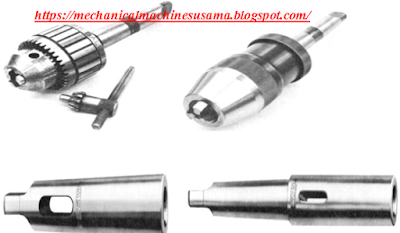Parts of Vertical Milling Machine
Parts of Vertical Milling Machine The vertical knee mill is the most common milling machine found in machine shops today. Therefore it will be used as an example to describe the general parts of all mills. Head The head (drive) is that part of the drive system that transforms electrical power from a motor to mechanical power in the spindle. The drive system also allows the machinist to change the speed of the spindle (RPM) and therefore the cutting tool. The quill moves vertically in the head and contains the spindle in which cutting tools are installed. Column The column is the most important part which is mounted on the base and acts as a support and holding device for all the other parts of a milling machine. It acts as a support for table and all feed mechanisms. The column should be rigid enough to sust...




Comments
Post a Comment